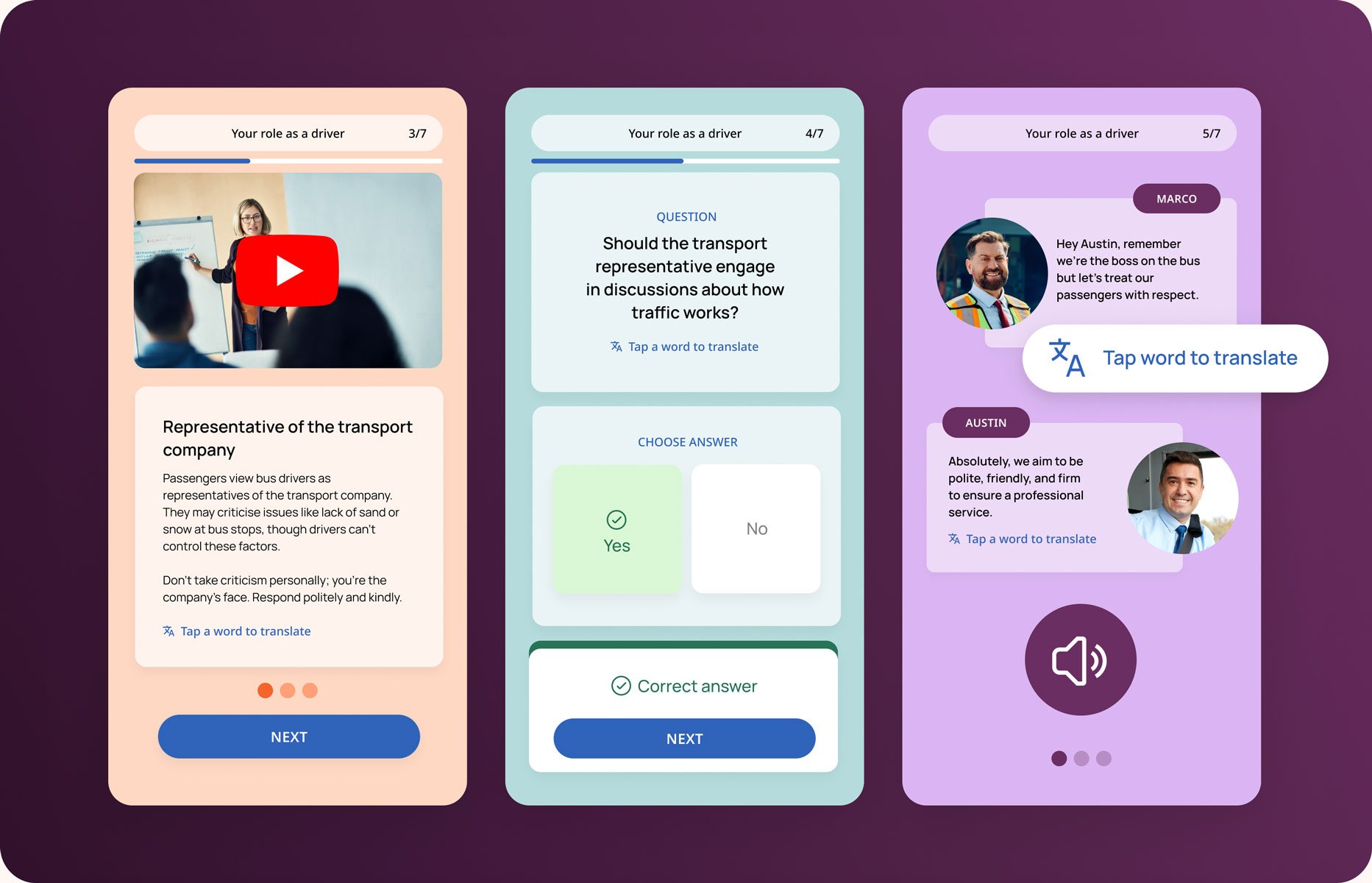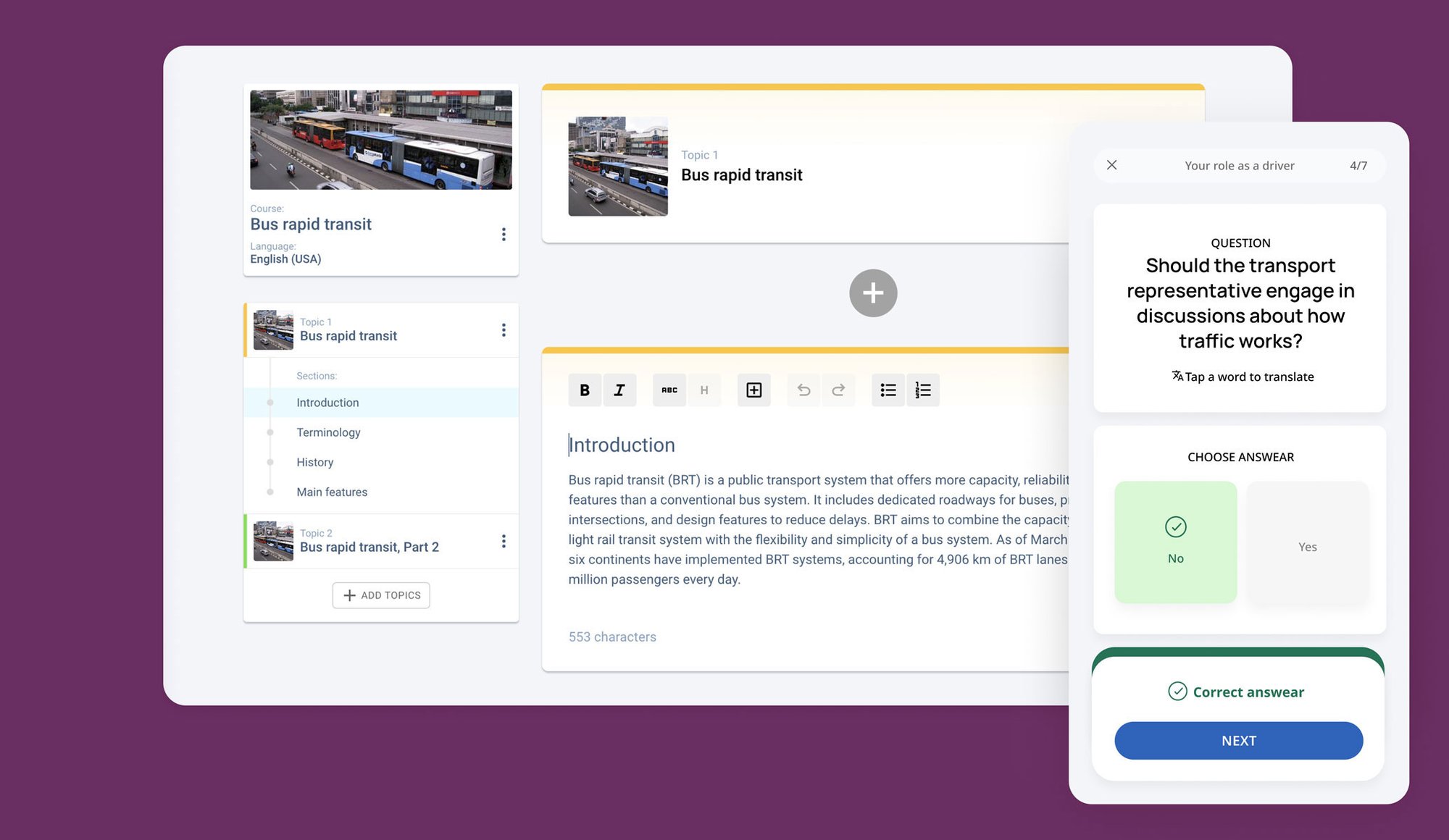Innovative learning and development strategies to mitigate the bus driver shortage
1. Launch a "Become a bus driver" awareness campaign
Increasing awareness about the benefits and opportunities of a career in bus driving is crucial to attracting potential candidates. Launch a targeted campaign highlighting the profession's rewards, such as job security, competitive salaries, and growth opportunities.
This education campaign can be conducted through various mediums, including social media, local media outlets, and community events.
2. Implement gamified training programs
Making training programs engaging and interactive can significantly improve the learning experience for bus drivers. Implement gamified training modules that incorporate competition, rewards, and progress-tracking elements.
This approach enhances knowledge retention and makes the training process more enjoyable and motivating for drivers.
3. Offer flexible, mobile learning options
Adopting mobile learning platforms can provide bus drivers with convenient access to training materials and resources. By offering flexible learning options, bus drivers can learn at their own pace and convenience without disrupting their daily schedules.
Mobile learning ensures continuous skill development and empowers drivers to stay updated with industry trends and best practices.
4. Utilise VR for realistic driving simulations
Virtual Reality (VR) technology enables bus drivers to experience realistic driving scenarios, enhancing their skills and decision-making abilities. VR simulations can train drivers in challenging environments, adverse weather conditions, and emergencies.
This immersive training approach prepares drivers for real-world scenarios, ensuring they can handle any situation.
5. Host community engagement events
Engaging with the local community can help build a positive image of the organisation and attract potential bus driver candidates. Organise events such as career and job fairs, open days, or educational sessions to showcase the benefits of becoming a bus driver.
By actively engaging with the community, organisations can raise awareness about the career opportunities available, answer questions, and address any misconceptions that may discourage potential candidates.
6. Promote a bus driver mentorship program
Establishing a mentorship program within the organisation's district can provide valuable support and guidance to new bus drivers. Pair experienced drivers with recruits to help them navigate their roles, build confidence, and share knowledge.
Mentorship programs foster a sense of belonging for students and create a supportive environment for drivers to learn and grow in their careers.
7. Create microlearning content for driving and other topics
Microlearning involves delivering bite-sized, focused learning modules that bus drivers can easily consume during breaks or downtime. Create short videos or interactive modules that cover specific topics related to driving, safety, customer service, or any other relevant area.
This approach allows drivers to access relevant information quickly and efficiently, improving their knowledge and skills without disrupting their daily responsibilities.
8. Leverage social media for recruitment and engagement
Social media platforms can be powerful tools for both recruitment and driver engagement. Use platforms such as Facebook, LinkedIn, and Twitter to advertise job vacancies, share success stories of bus drivers, and engage with the driver community.
Regularly posting updates and interacting with drivers on social media can create a sense of belonging, facilitate communication, and showcase the positive aspects of being a bus driver.
9. Offer incentives for skills upgradation
Encourage lifelong learning and skill development by using paid training and offering incentives for drivers to upgrade their qualifications. Provide drivers financial support or time off to attend training programs, obtain advanced licenses, or acquire additional certifications. By investing in professional development, organisations demonstrate their commitment to driver growth and create a culture of continuous learning.
10. Encourage peer-to-peer learning networks
Foster a knowledge-sharing culture by encouraging bus drivers to connect and learn from each other. Establish online forums or regular meetups where drivers can discuss challenges, share best practices, and seek advice from their peers. Peer-to-peer learning networks allow drivers to help each other grow and learn from their collective experiences.
11. Collaborate with local driving schools
Partnering with local driving schools can help bridge the gap between the demand for bus drivers and the available pool of candidates. Organisations can create a pipeline of potential bus driver recruits by establishing relationships with driving schools. Collaborating with driving schools allows for targeted recruitment efforts of applicants and ensures that candidates receive the necessary training and qualifications before entering the profession.
12. Implement employee referral programs
Implement employee referral programs to tap into the existing network of bus drivers. Encourage current drivers to refer qualified candidates for open positions, offering incentives for successful referrals.
Employee referral programs attract potential candidates already familiar with the profession and promote a sense of ownership and pride among current drivers.





